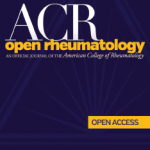Basic research has been central to my career, which has focused on the contribution of genetic and environmental factors in shaping immune response, particularly autoimmunity as it relates to lupus. And I also do clinical trials. That combination has given me a broad perspective when it comes to ACROR.
TR: Your research has revealed several genetic-metabolic-environmental interactions, notably as they relate to systemic lupus erythematosus (SLE), and may open pathways to therapeutic interventions. Would you provide a little more detail on your research?
Dr. Perl: I have been interested in immunology, and lupus has fascinated me as a very complex disease that has a strong connection to autoimmunity. As time has passed, our understanding about the important contributions of genetics has grown. For instance, we now know that certain gene variants are linked to SLE and that variations in a combination of genes can increase the risk of developing SLE.
We have learned that environmental factors, including viruses, microbiota, nutrients and diet, have major impacts on the functioning of the immune system. We have also learned more about the cell types that make up the immune system, and [gained] much more granular knowledge of the many different cell subsets and how plastic and responsive they are to environmental factors. All of that combined has made the science behind autoimmunity very fascinating to me and remains my primary research focus.
This research has led to basic science grants from the U.S. National Institutes of Health (NIH) to develop models of autoimmune diseases, including lupus, of course. For instance, we continue to study lupus susceptibility genes in the laboratory and have identified a number of them that regulate metabolism, which is a process that integrates how the environment interacts with the genome. In other words, genes determine how metabolism works, and what we eat and what we breathe—the environment—also has an impact on metabolism. Going back 25–30 years, when we explored the role of metabolism in immune cell activation, it was considered a simple housekeeping process. And now, this newly emerged field of immunometabolism is a very hot topic.
And then, I also conduct clinical trials in lupus, including a current NIH-supported trial that has many centers participating across the country. [Author’s note: Funded with a $7.2 million grant, the five-year clinical trial is testing whether the antioxidant N-acetylcysteine (NAC) is a useful treatment for SLE. Nearly two dozen lupus centers around the country and about 250 patients are participating in the trial, which will continue into 2026.]




